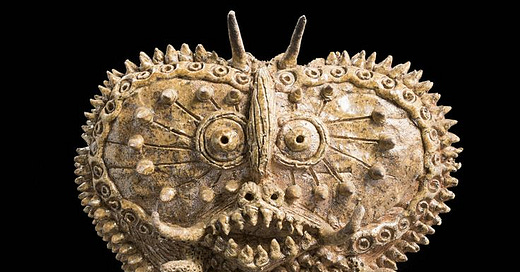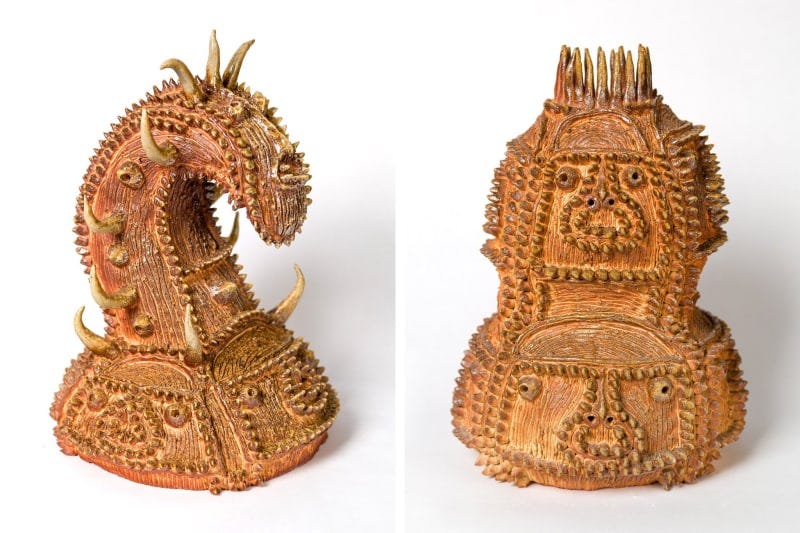Welcome, cherished subscribers, to the Monthly Magpie, a new series in which I find something shiny out in the world and bring it back here to the nest. Last month, it was this essay on the rise of “AI sparkles.” Sometimes, I will do two a month. That’s just something you’ll have to live with.
I chose this title because, as you’re doubtlessly aware, I’m obsessed with birds, and because I wanted to acknowledge the broad variety of topics I want to write about. I’ve come to terms with the fact that I get bored pretty easily, and I think it’s prudent to bake a lack of cohesion into the project from the jump.
In folklore, the magpie is said to be attracted to all manner of precious objects and knickknacks to decorate its nest with, as it does in the popular tale, “the maid and the magpie.” This behavior has been more or less debunked by experts. To show remorse for proliferating misinformation, I’ll be ending each Monthly Magpie entry with a true corvid fact. It’s the least I can do.
This month, I’m writing about a subject that’s fascinated me for some years now: Japanese artist Shinichi Sawada, and the concept of “outsider art.” Thank you, as always, for your support, and I hope I can return your investment with high-quality work that enriches your day. If you’re a paid subscriber and have a suggestion for a future Monthly Magpie subject, I’d love to hear it in the comments.
High up on a mountain in the Shiga Prefecture in Japan, in a sheet metal hut, Shinichi Sawada molds creatures out of clay. Born in 1982, Sawada started attending Nakayoshi Fukushikai, a local social welfare organization for disabled people, at the age of eighteen, and has been working prolifically ever since, creating striking, earthy creatures bedecked with scales, horns, eyes, and teeth. They’re among my favorite ceramic works.
It’s hard to say just how many of these pieces Sawada has created. He works whenever he can, but, in the world of clay creature production, there are strict limitations in play. In the winter months, the hut is unavailable. Each of his works take about six months to dry out before they’re ready to enter the wood fired oven. Firing, too, is a limited occurrence: it’s tied to an annual, traditional event. Once in the oven, the nascent creatures are fired for three days and nights, and then left for a week to cool down before they can be removed. There’s no glaze, and the distribution of the pieces in the oven affects their individual coloring.
Sawada is autistic, and does not communicate about his art, two facts that, it seems, have compounded public interest in both Sawada and his output. Questions about his motifs, like the thorns, multiple faces, and the focus on “monsters,” thus go unanswered. None of his works are titled. I encountered his work while watching a BBC documentary on YouTube called Turning the Art World Inside Out, which originally aired in 2013 and was hosted by Alan Yentob. The documentary casts its eye on several artists that, together, represent a controversial genre known as “outsider art.”
Artists within this category are defined by their detachment from the contemporary commercial infrastructure of the art world. These are individuals who may not identify themselves as artists at all. Their remoteness from “the industry” is most commonly linked to neurodivergence in some way. The genre has a lot in common with so-called “naïve art,” art created by a person with no formal training, and is also known as “art brut,” or “raw art.”
I don’t like writing about art. It’s like writing about writing. It feels like describing in vivid detail the dream you had last night—something you’re doing for yourself while pretending it’s of general interest. That doesn’t mean I don’t do it, mind you. Write about art, I mean. I can’t help myself. I suppose I feel like, if I keep doing it, I’ll eventually stumble upon something profound. It hasn’t happened yet, but there's always a chance.






